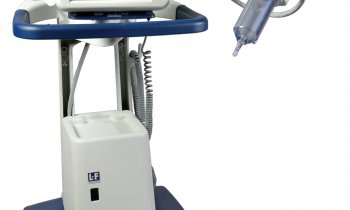New diagnostic tools win the hearts of cardiologists
John Brosky reports
During the 2010 ESC meeting, held in Stockholm, new guidelines for myocardial revascularisation were handed down by a prestigious Task Force made up of representatives of both the ESC and the European Association of Cardio-Thoracic Surgeons (EACTS).
The Task Force was co-chaired by the past president of European Association of Percutaneous Cardiovascular Interventions (EAPCI), William Wijns MD, from the Onze-Lieve-Vrouw Hospital in Aalst, Belgium.
The diagnostic technology that won the strongest endorsement of a Class I recommendation with A-level evidence is not an imaging technology but Fractional Flow Reserve (FFR), an index determining the functional severity of narrowings in the coronary arteries as measured by a catheter-based wire.
The panel also signalled the end of an era in cardiology by replacing the venerable combination of a treadmill and electrocardiogram (ECG) test with the new generation of stress echocardiography, a non-invasive diagnosis of myocardial viability that is more accurate in the detection of ischemia, according to the new guidelines.
‘Stress imaging techniques have several advantages over conventional exercise ECG testing, including superior diagnostic performance, the ability to quantify and localise areas of ischaemia, and the ability to provide diagnostic information in the presence of resting,’ the authors stated.Multi-detector computed tomography (MDCT) emerged as a preferred modality for the detection of coronary artery disease (CAD) in the new guidelines.
The authors provide a detailed discussion on the reliability of MDCT for ruling out significant CAD in patients, as well as its tendency to overestimate the severity of atherosclerotic obstructions.
However, magnetic resonance imaging (MRI) appeared to be considered a novel technology that has not yet proven its worth. ‘Data suggest that MRI coronary angiography has a lower success rate and is less accurate than MDCT for the detection of CAD,’ the authors reported, while adding in a later section that ‘cardiac MRI has been applied only recently in clinical practice and therefore fewer data have been published.’
The august panel almost gushed praise over the emergence of ‘hybrid imaging’, combining two modalities in the same scanner for a single imaging session. According to the panel, ‘The combination of anatomical and functional imaging has become appealing because the spatial correlation of structural and functional information of the fused images may facilitate a comprehensive interpretation of coronary lesions and their pathophysiological relevance.’
Finally, the authors held forth on perfusion techniques, pronouncing that ‘newer single photon emission computed tomography (SPECT) techniques, with ECG gating, improve diagnostic accuracy in patient populations including women, diabetics, and elderly patients’.
Meanwhile, positron emission tomography (PET) studies with myocardial perfusion PET are reported to provide ‘excellent diagnostic capabilities in the detection of coronary artery disease,’ according to the Task Force, which added that the comparisons of PET perfusion imaging have also favoured PET over SPECT.
03.11.2010











